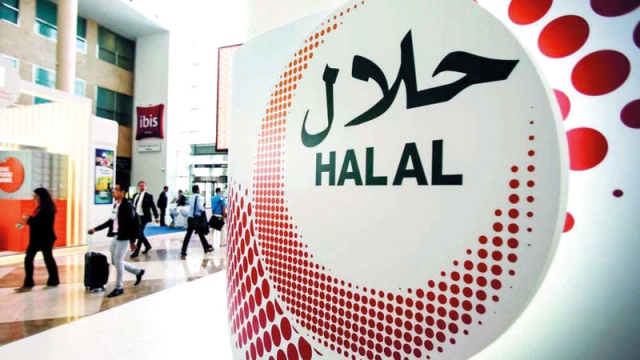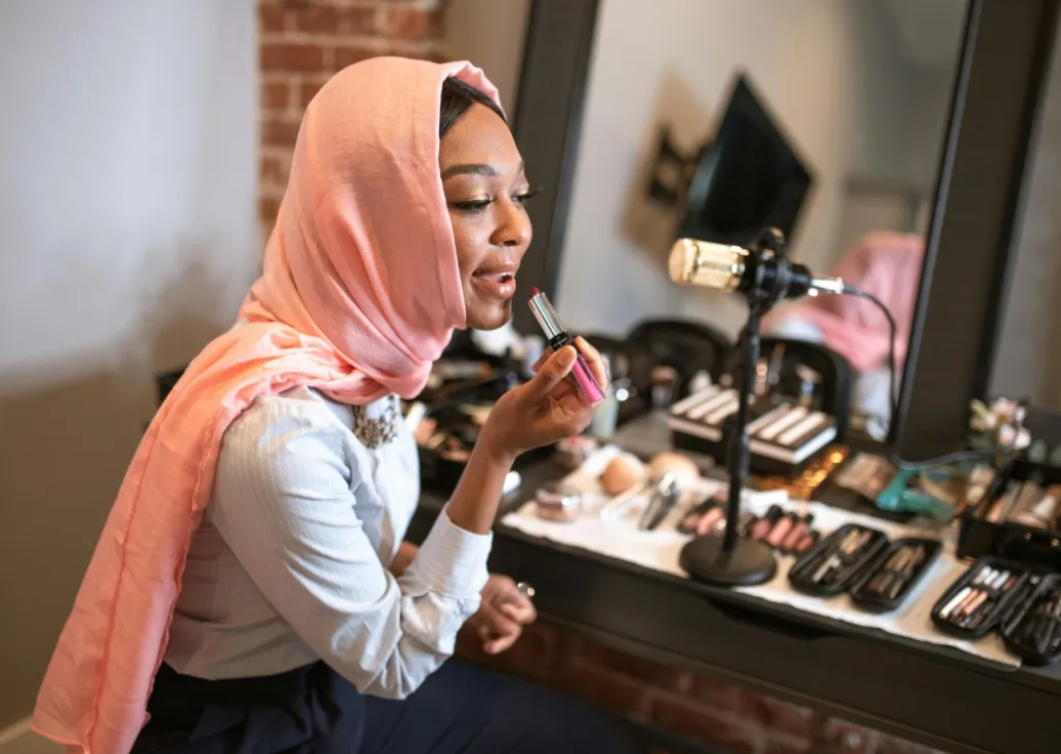The Halal industry is much more than just food on your plate. It’s a way of life that encompasses the entire ecosystem, from food production to consumerism. The Halal industry is a booming global market. The global Islamic economy comprises seven sectors — Islamic finance, Halal food, modest fashion, media and recreation, Muslim-friendly travel, pharmaceutical, and cosmetics.
It is estimated that the global Halal market will be increased by trillions in 2027, making it one of the fastest-growing industries in the world today. Recent years have seen a surge in global awareness of sustainability, ethical consumption, green growth, and digitization, enabling the Halal industry to flourish worldwide.
What is Halal?
The word ‘Halal’ comes from Arabic which means “allowed” or “permissible” according to Islamic law. Therefore, every Muslim must ensure that whatever they consume comes from a Halal source—not just the ingredients but also the entire production and handling process from start to finish (Zakaria, 2008). The definition given by Jabatan Kemajuan Islam Malaysia (JAKIM) in Trade Description Order 2011 covers products and services encompassing all the business operations like packaging, marketing, manufacturing, logistics, supply, maintaining premises, slaughtering, and so on (JAKIM, 2015).
Current Global Halal Food Market Insights and Trends
The global Halal food industry is expected to hit almost $4 trillion by 2028 as it expands at an 11.25% CAGR over the next eight years. In 2019 alone, Halal consumers spent a staggering US$1.17 trillion on Halal food — making it the second largest sector after Islamic finance.
Increasingly, customers are purchasing natural regular food and refreshment items. This trend has led to increased revenue from consumers in the utilization of Halal food products. There is a massive opportunity for Halal food manufacturers to capitalize on this growing interest by developing new products marketed in western-style supermarkets, including grocery stores and hypermarkets.
General stores and food makers in numerous nations have begun catering to Halal customers by offering more Halal refreshment products. The Halal food market is projected to experience significant growth due to the rising demand from Muslim and non-Muslim consumers. This is because of its cleanliness-related benefits, such as liberation from debasements, alcohol, and blood.
In addition, organizations are now following Halal-based planning as it allows for both quality and taste levels, which gives an edge in commercial centers.
What Are the Factors Driving the Global Halal Industry?
Several factors are driving the global Halal industry. Let’s talk about these driving factors in detail below:
Increasing Muslim population
The Muslim population is rapidly expanding, now consisting of 2.2 billion people — almost 28.7% of the global populace! In recent years, immigration and high birth rates have contributed to this growth surge in our communities. As such, there has been an increased demand for Halal products worldwide.
Rising Demand for Certified Halal Products
Religious and ethical values also play a major role in driving the global Halal industry. Customers are increasingly seeking out products that meet their standards and expectations. As the demand for certified Halal products has grown, manufacturers have taken steps to ensure that their products meet the required standards. This has led to the emergence of many certification bodies and Halal product labels. Consequently, this has been increasing trust in Halal products and further propelling the global development of the Halal sector.
ISA (Islamic Services of America) is a US-based Halal certification body that helps businesses go Halal in the United States of America, Canada, and Mexico. ISA’s certification process includes a rigorous review of ingredients and a regular inspection of production facilities to ensure that all products meet the highest standards of Halal compliance.
Growing Awareness of Health and Wellness
Consumer preference towards health and wellness is also driving the Halal industry. Consumers are increasingly looking for fresh, natural, organic alternatives to traditional processed and packaged foods. Organic Halal-certified products provide an attractive substitute as they offer a wider range of benefits, like being free from chemical pesticides, preservatives, and additives. This has led to a rise in demand for certified Halal products free from harmful substances and chemicals.
In addition, the increasing demand for natural and organic meat is also driving the growth of the global Halal industry as customers seek out ethically produced animal products.
The Upsurge of Muslim-Friendly Tourism
Halal tourism is one of the world’s most lucrative and rapidly growing industries. By 2026, annual global spending from Muslim travelers will likely skyrocket to $300 billion according to a report by Mastercard and HalalTrip.
The growth of Halal tourism is due to a combination of factors, including the increasing number of Muslim tourists, changing consumer preferences, and ethical considerations.
Moreover, the increasing demand for luxury holidays among affluent Muslim travelers is driving up the opportunities for Halal-friendly hotels and resorts from the Middle East to Japan, Thailand, South Korea and other countries and regions. These establishments offer special amenities and services tailored for Muslim travelers, such as Halal food options, push shower in toilets, and prayer facilities.
Diversification Of the Global Halal Supply Chain
The global Halal industry also benefits from expanding the global Halal supply chain. Companies are now more capable of sourcing Halal certified ingredients and materials from international markets, allowing them to provide consumers with a wider range of Halal finished products. In addition, the rise of digital e-commerce platforms has made it even easier for buyers to access products from anywhere in the world.
The Domination of Food-Tech Within the Halal Industry
The Halal industry has undergone significant transformations due to the emergence of digital technology, with AI and automation radically altering various aspects. This shift has enabled companies to innovate faster, develop products more efficiently, and scale their businesses more quickly. This increased digitization is transforming the global Halal industry, with Food-tech startups tapping into this growing market.
For example, Halal food-related platforms and apps are rapidly gaining popularity due to the ease of ordering Halal-certified products. With the rapid growth of grocery e-commerce, there is a plethora of opportunities for businesses operating within the Halal sector, from Halal cloud kitchens to ghost kitchens.
Rise of Transparency and Sustainability
Customers are becoming more aware of the environmental impact of their purchases. They are increasingly demanding ethically produced products with a minimal environmental footprint.
As a result, businesses have been investing in transparent supply chains to ensure the traceability of their products, from farm to fork. This has enabled businesses to monitor their production process better and ensure the quality of their products.
Food safety Concerns Are Fueling the Growth of the Halal Industry
Food safety concerns are further fueling the consumer demand for more transparency in the Halal food chain. Companies are looking for ways to address this concern, and blockchain technology is a promising solution.
Halal certification is an important part of global trade. However, it often lacks transparency in who certifies what and where products come from. Unless the Halal certifying body is authentic and can be verified, such as ISA, there is little assurance that the product is actually Halal.
Thanks to blockchain technology, companies can now ensure the traceability of their Halal products through the entire supply chain. This helps businesses meet customer demands for more transparency and makes it easier for them to prove authenticity and compliance with Halal standards.
Blockchain technology is now seen as a promising solution for Halal food traceability and sustainability by Halal industry players.
Blockchain technology, also known as distributed ledger technology (DLT), is a decentralized database that records transactions. It has been used to track food from the farm to store shelves and even in production.
To achieve sustainability and food traceability, Halal industry stakeholders are exploring blockchain technology as a viable solution. They can monitor the origin of their products, document how they were processed, and keep tabs on each ingredient used.
This method could help prevent food fraud or contamination at any stage of the supply chain—from farmers growing crops on land to factories processing meat or other ingredients.
Recently, OneAgrix, a B2B faith-based and quality foods trade ecosystem and digital platform, and its eight partners, unveiled the world’s pioneering and comprehensive farm-to-fork solution that traces beef from DNA to QR code. This revolutionary breakthrough will have significant implications for food supply chain traceability.
The Future of Halal Supply Chains
In the next few years, the global Halal industry will continue to evolve as it learns to meet the needs of consumers and businesses. Thus, there will be an increased focus on transparency and traceability within supply chains.
The Halal supply chain has already become more transparent in recent years through initiatives such as LCA (life cycle assessment). The LCA measures environmental impact throughout each production stage, from raw material extraction through processing and manufacturing into final products.
In addition, we see more efforts towards sustainability by ensuring that carbon footprints and animal health are maintained throughout the production process. More companies now recognize the potential of Halal certification as an international quality assurance standard.
Blockchain technology also plays a major role in helping the Halal industry reach new levels of transparency and trustworthiness, ensuring that customers have access to high-quality food products that comply with Halal standards. The potential for blockchain technology to revolutionize food systems is immense, and its impact on the Halal industry will be felt in the years to come.
Halal is a way of life. It’s about ensuring our consumables and non-consumables are safe, secure, and ethical. Halal food looks and tastes great, but it also keeps us healthy. The expansion of the global Islamic economy provides jobs for millions of people worldwide who directly or indirectly work in the Halal industry. With more than 2 billion Muslims living on Earth today, this trend shows no sign of slowing down—and we can all be part of it!




















